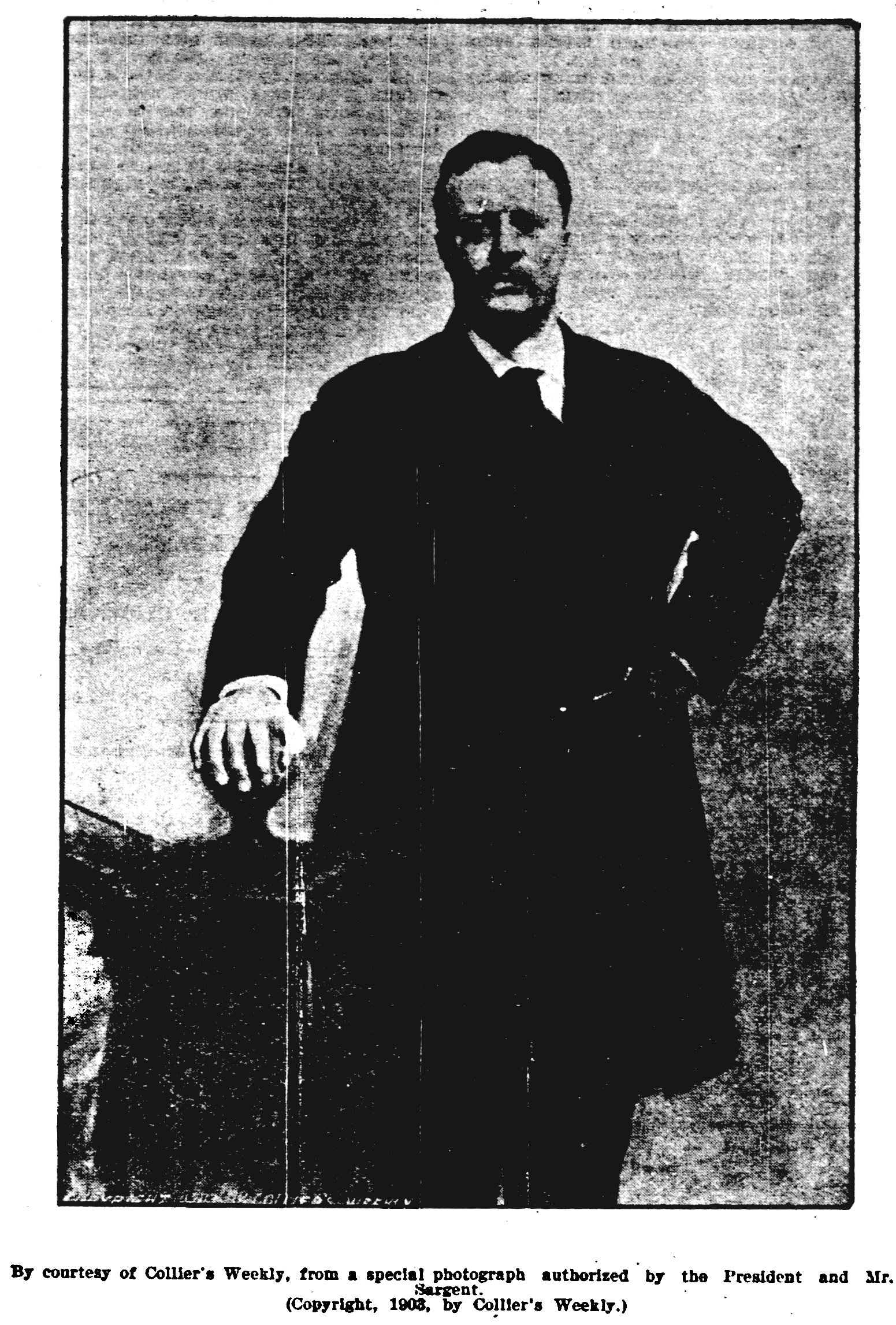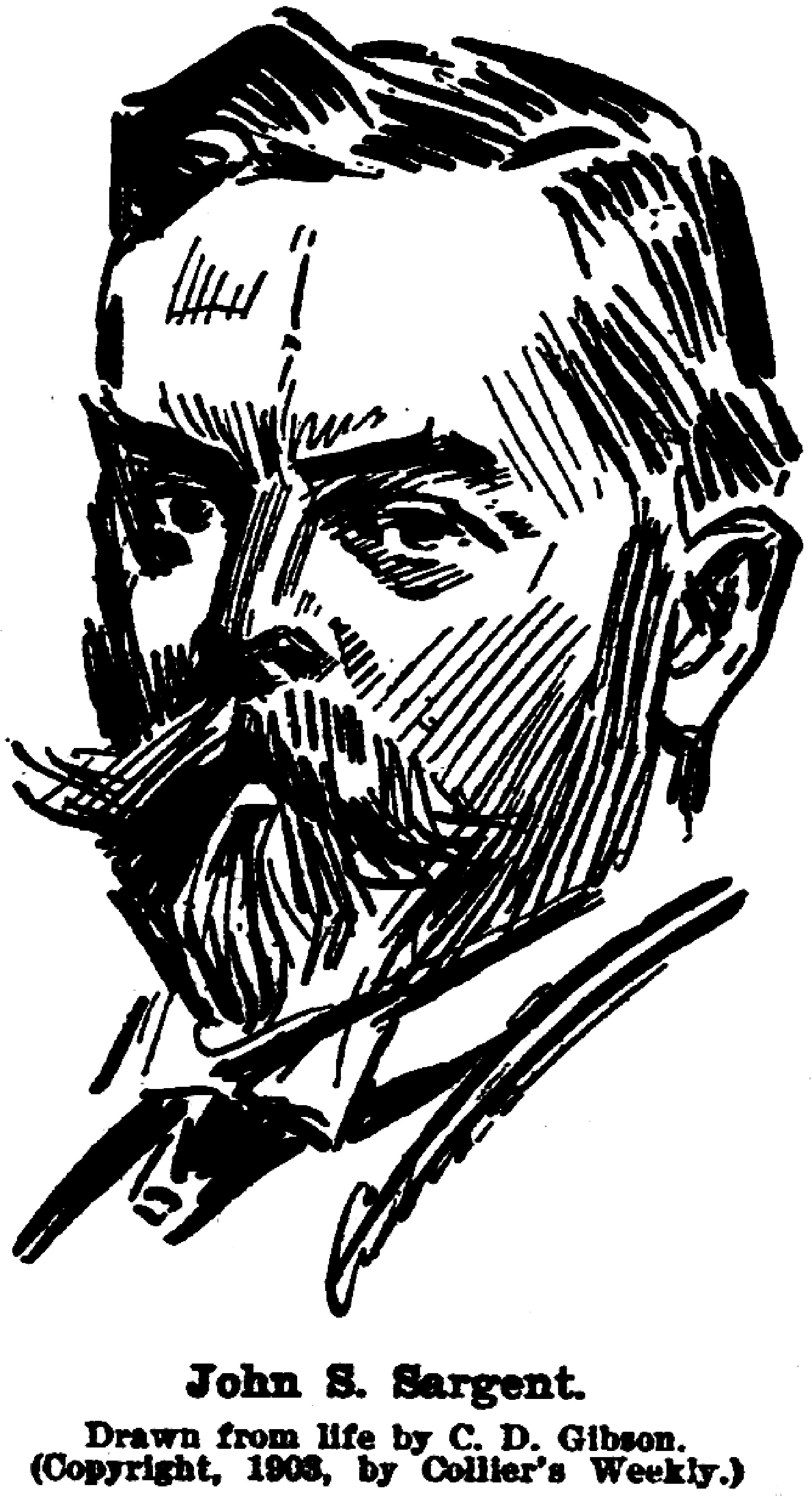The Washington Evening Star April 4, 1903
Art Notes

John Singer Sargent's portrait of President Roosevelt, which was painted in the White House last month and has for the past three weeks been privately exhibited in the V. G. Fischer gallery, was hung this week in the main vestibule of the Executive Mansion, and, as the official portrait, has become public property.
When it was reported last fall that Mr. Sargent was coming to the United States to paint the President's portrait there were to be heard on every side expressions of gratification, and it is probable that the completion of no other recent work of art has been awaited with such widespread interest.
In 1874 Mr. Sargent entered the studio of Carolus Duran as a student, and five years later he won an honorable mention in the Paris Salon for a portrait of his master. Following this came a series of successes, until in 1885 his painting of Mr. Barnard's two little daughters, &ndawh; popularly known as “Carnation Lily, Lily Rose,” proclaimed his unique ability and gave him rank with the foremost. Since then he has painted the famous mural decoration for the Boston Public Library and portraits of scores of celebrated persons, steadily increasing, by the merit of his work, his reputation, until now artist and layman alike accord him the first place in his profession.
This last work-the President's portrait is in many respects thoroughly characteristic, and has been done with all the vigor, simplicity and evident genius which commonly distinguish his productions.

The President is seen sharply silhouetted against a sunny gray background, squarely facing the observer, with one hand on his hip and the other resting on the newel post of the oak stairs. He wears the conventional Prince Albert coat and dark, gray, striped trousers and the unconventional low, turn-over collar. There are both force and dignity in the somewhat undignified pose, and intense personality in the face and figure. Mr. Sargent has portrayed more than the outer man. He has epitomised his sitter's most striking characteristics and written them so plainly on his canvas that all who run may read. He has pictured with the President's features his energy, his alertness, his aggressiveness and his unyielding disposition, but he has left out the kindliness and geniality which have won for Mr. Roosevelt the regard of his subordinates and the affection of his friends. It is the President, the chief executive, as not only Mr. Sargent but half the world sees him who has been painted, and so vivid is the realism thatthe observer cannot but be convinced of the veracity of the transcription. From the painter's standpoint this has been accomplished by surpassing skill and ability. The manner of painting the head, the figure and the clothes is an inspiration and a delight. Mr. Sargent handles his brush as Robert Louis Stevenson did his pen; nothing is overtold or undersaid. He has arrived at the desired result-the portrayal of character--with the least possible effort, and has, once gaining this point, proceeded no farther.
But as a painter proves himself capable of the highest accomplishment he becomes liable in relative proportion for reproach for minor errors. What would be excusable in an ordinary portrait painter would be inexcusable in one possessing Mr. Sargent's knowledge and skill; and, therefore, one turns with unusual wonder and regret from the brilliantly executed portions of the portrait to the poorly drawn right arm and hand and the unexplained, inartistic and unreasonable newel post. The one is as unnecessary as the other, and neither seems properly related to the unit of the whole. The arm, while sharply fore-shortened, is equally distant at the shoulder and wrist, and the hand, which rests on with undue weight upon the post, thrusts itself clearly out of the canvas and into chief prominence. These are errors merely of haste and oversight, and weighed against the merit of the whole, sink into insignificance, but they are errors, and certainly should not be allowed to remain in this portrait, which, more all others, is to represent the great American painter for all time in America and to the World.
Art Notes, The Evening Star, Saturday April 4, 1903, page 22. (PDF)